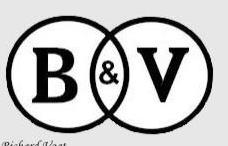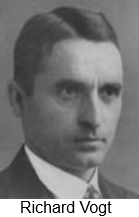Hamburger Flugzeugbau
Hamburger Flugzeugbau is a family business originally founded in 1933 by the Blohm & Voss shipbuilding yard and famous in the thirties and forties chiefly for its seaplanes. The Blohm and Voss Company gradually came into prominence as builders of seaplanes and flying boats for the Luftwaffe. In fact, the Dornier Company somewhat retired from this field, and the designs of Blohm and Voss gained predominance in the operational equipment of Germany.
In 1936 the B. und V. company produced the prototype of the BV139, a four-engined, low-wing, cantilever, twin-float seaplane, originally designed for transatlantic service. Two machines of this type completed fourteen flights from the Azores to New York in the course of the summer and autumn of 1937. With the outbreak of war the, BV 139 was modified for military work. The BV 139, known before the war as the Nordwind, is one of the Lufthansa types modified for military use. It is powered with four Junkers Jumo 205c engines of 600 h.p. each, and is at present employed for mine laying.
The Blohm and Voss concern, of Hamburg, was responsible for the design of two unusually interesting and apparently efficient marine types. These were the Ha 138 three-engined flying boat and the Ha 140 twin-engined torpedo-bomber floatplane.
The Ha 138 was remarkable because it had a short central hull and a tail with twin fins and rudders carried on booms behind the nacelles of two wing-mounted Junker Jumo diesei engines A third engine is placed between these two on a rather higher level. The peculiar layout is said to give a wide field of fire from the rear gun positions and, due to the short hull, to improve take-off. Apart from the gun in the nose there is a second position behind die central engine and a third in the stern of the hull. The Ha 138, although designed to a difficult specification fit is said to have been eliminated in competition with the Heinkel He 115), is of commendably clean design. It is a high-mid-wing cantilever monoplane with two B.M.W. radials, behind which there are massive faired structures connecting the wing to the floats.
The Blohm and Voss Ha 140 was a cleverly designed float plane intended for torpedo-dropping, bombing and reconnaissance. Powered with three Junkers Jumo 205 diesels the Blohm and Voss Ha 138 was a long-range flying boat of unusual design.
Of the Blohm and Voss machines the most unconventional was undoubtedly the type BV141B asymmetric aircraft which was especially produced to afford maximum visibility. Powered with a single BMW 801, only a few of these machines were built and the type was not used operationally.
Two prototypes of the high-wing twin-engine Bv 144 were constructed for the Germans by the Societe Louis Breguet, of Fcance. The main feature of this aircraft is a variable incidence mechanism for changing the effective angle of attack during flight. The machine accommodated a crew of three together with 18 passengers and 1,000 lb. of freight, and had a range of 930 miles; all - up weight was 28,900 lb.
A high altitude single seat fighter, originally designed by Messerschmitt, was entrusted to Blohm and Voss and given the title of Bv 155. Although quantity production was contemplated the aircraft never became operational. There were two versions, the Bv 155B with a DB603 engine and TKL15 turbo-supercharger, and the Bv 155c with DB603U engine and TKL 15 turbo-supercharger.
The prototype BV222 was completed for the Lufthansa before the war, but it was not until around 1943 that the BV222 seemed to have gone into production. The BV222 is powered by six B.M.W. 132 DC air-cooled radial engines of 1,000 h.p. each and is said to have a maximum speed of 198 m.p.h., with a cruising speed of 170 m.p.h. and a range of 4,300 miles. With an all-up weight of 97,000 lb. it is the largest flying boat produced in Germany, and fell within the category of the world's "heavy" class.
The last Blohm and Voss aircraft was the BV238, only one or two prototypes of this having been built. It bears a general resemblance to the familiar Bv 222 but was considerably larger and heavier.



